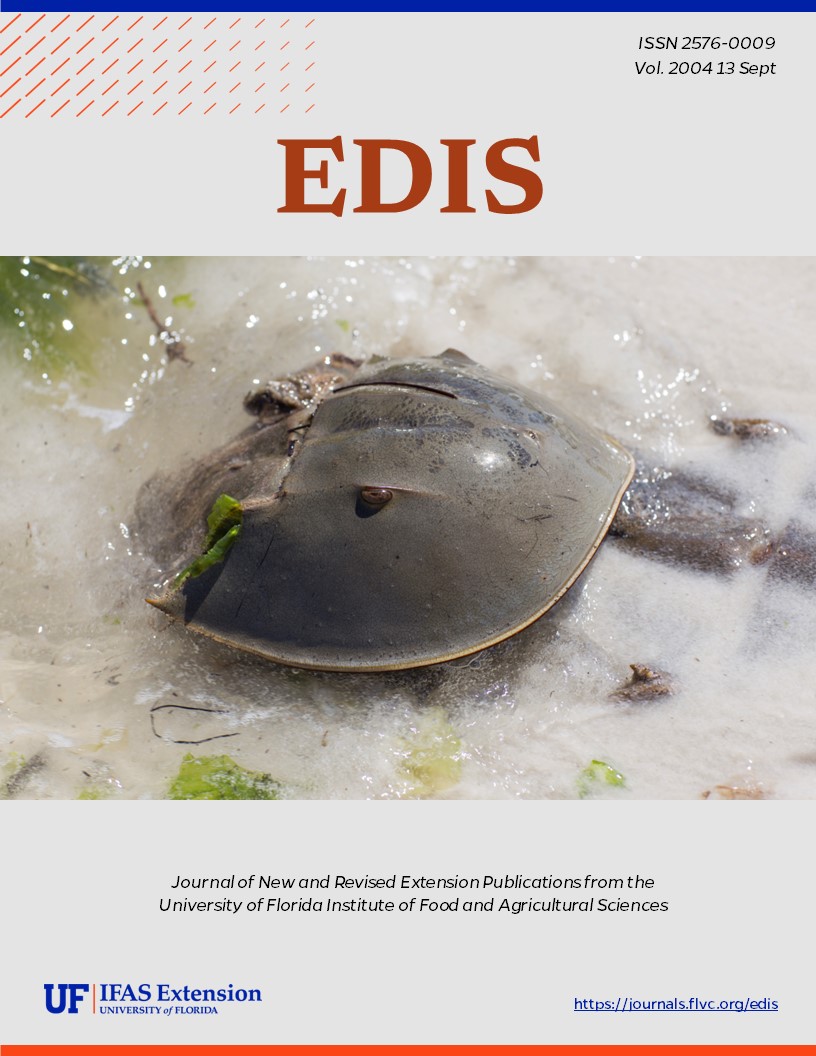Abstract
Cover crops are crops grown between cash crop cycles, or crops intercropped with cash crops to cover the ground, such as in vegetable fields, orchards, groves, and agricultural sites. If used appropriately, cover crops can improve soil structure and fertility, decrease soil erosion, provide foliage and animal feed, and suppress crop pests such as weeds, insects, nematodes, and other plant pathogens. Residues from cover crops can be incorporated as green manure to supply nutrients and improve fertility for the next crop. Using cover crops can increase on-farm crop diversity, may enhance many beneficial organisms, and possibly even contribute to carbon sequestration. One good example of a cover crop is cowpea, Vigna unguiculata (L.) Walp. This document is ENY-712, one of a series of the Department of Entomology and Nematology, Florida Cooperative Extension Service, Institute of Food and Agricultural Sciences, University of Florida. Date first printed: August 2004.
ENY-712/IN516: Management of Nematodes with Cowpea Cover Crops (ufl.edu)
References
Fassuliotis, G. 1976. Progress, problems and perspectives in breeding food crops for root-knot resistance, pp. 81-93, Proc. Res. Planning Conference on root-knot nematodes, Meloidogyne spp. January 12-16, North Carolina State University, Raleigh.
Gallaher, R. N., and R. McSorley. 1993. Population densities of Meloidogyne incognita and other nematodes following seven cultivars of cowpea. Nematropica 23: 21-26.
Kirkpatrick, T. L. and T. E. Morelock. 1987. Response of cowpea breeding lines and cultivars to Meloidogyne incognita and M. arenaria. Annals of Applied Nematology 1:46-49.
McSorley, R. 1999. Host suitability of potential cover crops for root-knot nematodes. Supplement to the Journal of Nematology 31: 619-623.
McSorley, R., and D. W. Dickson. 1995. Effect of tropical rotation crops on Meloidogyne incognitaand other plant-parasitic nematodes. Supplement to the Journal of Nematology 27: 535-544.
McSorley, R., and R. N. Gallaher. 1991. Nematode population changes and forage yields of six corn and sorghum cultivars. Supplement to Journal of Nematology 23: 673-677.
McSorley, R., and R. N. Gallaher. 1992. Comparison of nematode population densities on six summer crops at seven sites in North Florida. Supplement to Journal of Nematology 24: 699-706.
McSorley, R., M. Ozores-Hampton, P. A. Stansly, and J. M. Conner. 1999. Nematode management, soil fertility, and yield in organic vegetable production. Nematropica 29: 205-213.
Petrillo, M. D., and P. A. Roberts. 2000. Influence of susceptible and resistant cowpea plants on life history traits of Meloidogyne incogita. Journal of Nematology 32:453 (Abstract).
Sasser, J. N., and M. F. Kirby. 1979. Crop cultivars resistant to root-knot nematodes, Meloidogyne species. Department of Plant Pathology, North Carolina State University, Raleigh, NC.
Unless otherwise specified, articles published in the EDIS journal after January 1, 2024 are licensed under a Creative Commons Attribution-NonCommercial-NoDerivs 4.0 International (CC BY-NC-ND 4.0) license.

